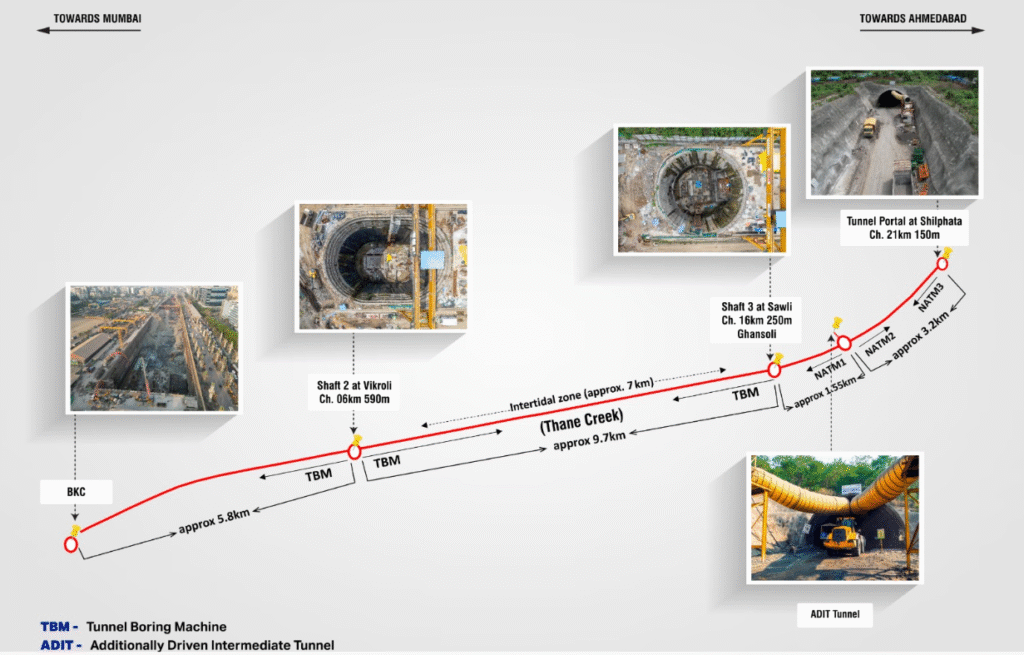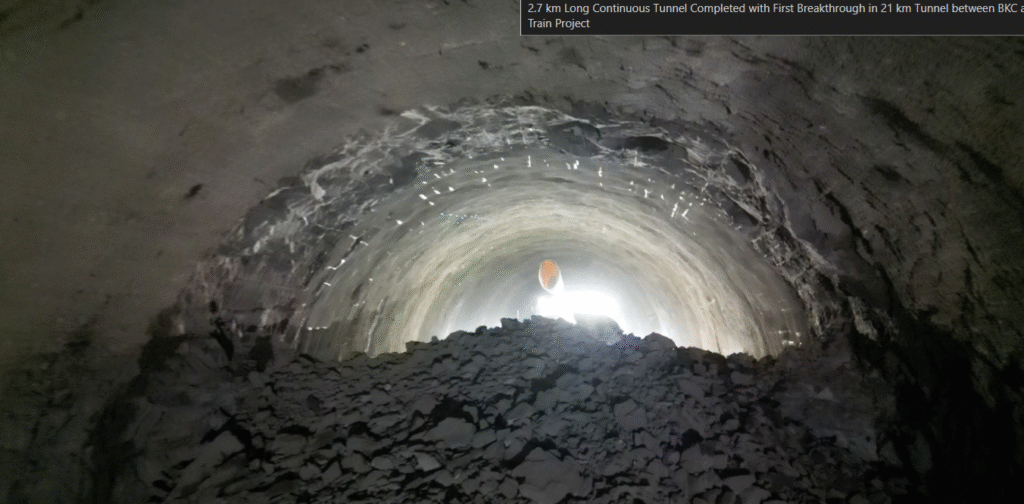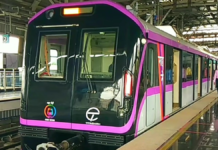The 508-km-long Mumbai-Ahmedabad High-Speed Rail (MAHSR) corridor has achieved a milestone with the successful completion of the first tunnel breakthrough using the New Austrian Tunnelling Method (NATM) at the Sawli Shaft in Ghansoli. This 2.7 km tunnel has been constructed between BKC and Ghansoli.

As part of the project, a 21-km-long tunnel is being constructed, of which 5 km is being excavated using the NATM technique between the Ghansoli and Shilphata sections. The remaining stretch will be constructed using Tunnel Boring Machines (TBMs).
To accelerate excavation, an Additionally Driven Intermediate Tunnel (ADIT) was constructed to facilitate the simultaneous tunnelling towards both Ghansoli and Shilphata.

Due to this strategic approach, as of now, approximately 1.62 km of tunnel has been excavated from the Shilphata side. Overall, the NATM section has achieved a cumulative tunnelling progress of around 4.3 km.
This NATM tunnel breakthrough has been achieved in the 20.377 km underground Package P2, which was awarded to Afcons Infrastructure Limited at a contract value of ₹6,397.27 crore. To facilitate the construction of the 21 km tunnel, Afcons has constructed three access shafts at key locations, BKC Station, Vikhroli, and Sawli, with approximate depths of 36 metres, 56 metres, and 39 metres, respectively.

For the 16 km portion of the tunnel that will be excavated using mechanised methods, three Tunnel Boring Machines (TBMs) will be deployed. The first of these, TBM S-1392, successfully passed its Factory Acceptance Tests (FAT) at Herrenknecht’s manufacturing facility in China during the summer of 2024. However, the machine has yet to arrive in India for deployment.
To get real-time updates on metro and railway tenders, follow: https://chat.whatsapp.com/FhRoGfM8zUl4secYj1ZQDT






